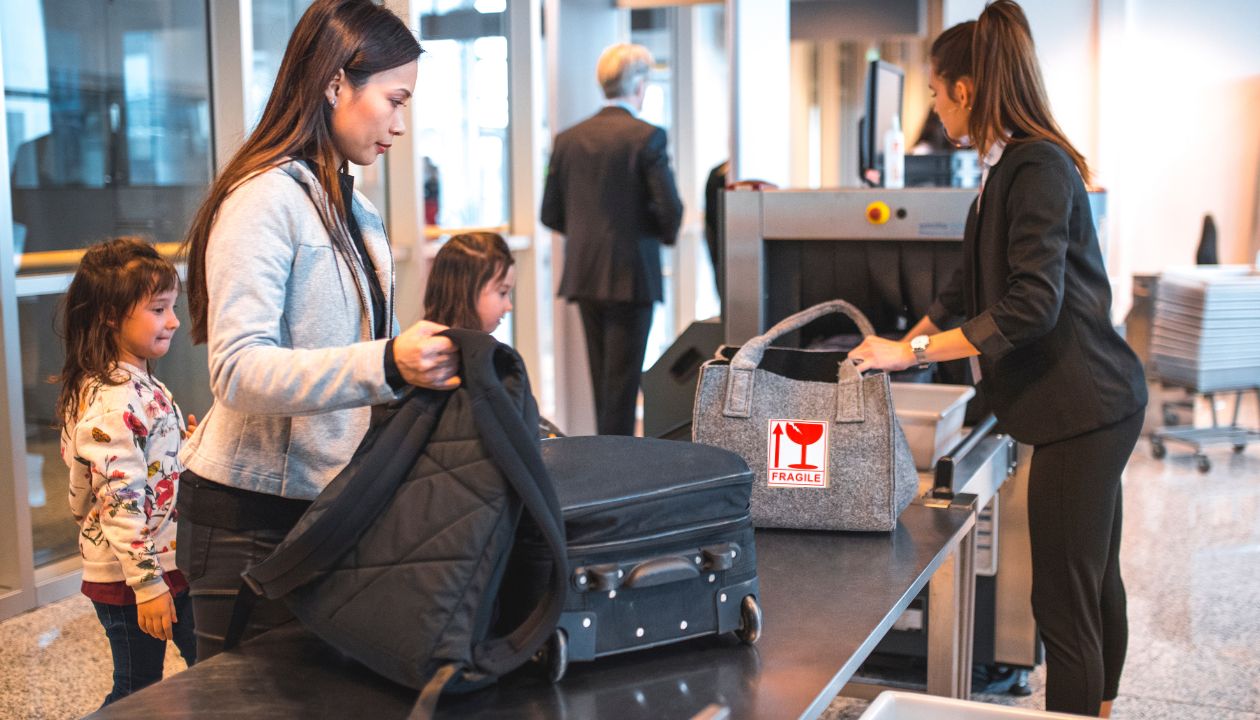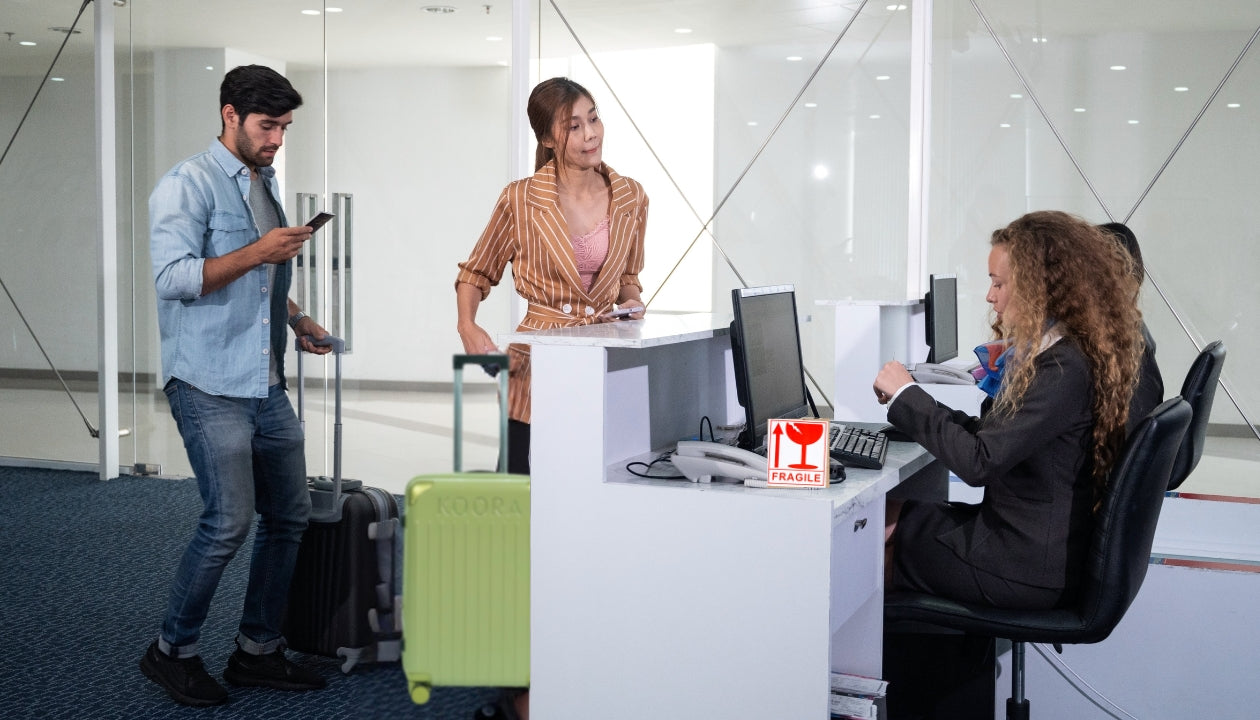
How to Avoid Overweight Baggage Fees
Learning about your overweight baggage at the airport comes as a tragic surprise, which may cost you steep fees. Airline overweight fees for bags will cost from $50 to $200 and beyond, depending on both airline policies and the amount of excess weight. And that becomes frustrating for both first-time travelers and frequent travelers

You can save yourself from travel-related stress and spend less money by properly learning to pack your bags without going over the weight limit.
This post provides step-by-step guidance for packing items without exceeding weight restrictions while maintaining essential items.
1. Know Your Airline’s Baggage Policy
Before you even start packing, check your airline’s baggage allowance. Policies vary widely depending on:
-
The airline
-
Your ticket class
-
Your destination
-
Whether you're flying domestic or international
Common economy class baggage limits:
-
Checked-in bag weight: 23 kg (50 lbs)
-
Carry-on bag weight: 7–10 kg (15–22 lbs)
Some budget airlines charge for checked-in bags and carry-ons, so always double-check before assuming anything is free.
You can visit the airline’s website or use flight comparison tools that list baggage policies to make your journey smoother.
2. Use a Luggage Scale at Home
It is risky to guess the weight of your luggage before your trip. Instead, a digital luggage scale or bathroom scale at home provides the best method to prevent unexpected situations during check-in.
How to weigh your bag:
-
Hang it from a handheld luggage scale
-
Weigh yourself holding the bag, then subtract your weight (if using a bathroom scale)
Your aim should be 1–2 kg (2–5 lbs) under the limit to allow for any scale discrepancies at the airport.
3. Pack Only What You Need
This might sound obvious, but we all tend to overpack “just in case.” One of the most effective ways to stay under the weight limit is to pack light and efficiently.
Ask yourself:
- Will I really wear this?
- Can I mix and match?
- Are there laundry facilities where I’m going?
You should stick to versatile, wrinkle-free clothing in neutral tones and limit shoes to two pairs—one casual and one formal/functional.
4. Downsize Toiletries
Huge bottles of shampoo, lotions, and body wash are unnecessary weight for brief travel occasions. Instead:
-
Use travel-size containers (100ml or less)
-
Buy toiletries at your destination
-
Pack multi-purpose products (like 3-in-1 soap)
Carry liquids in your hand luggage only if they follow TSA guidelines (in a quart-sized clear zip bag, 100ml max per item).
5. Maximise Your Carry-on & Personal Item
Use your free personal items and carry-on luggage efficiently when they are covered within your fare. The majority of airlines do not implement weight restrictions for personal belongings such as backpacks or purses.
Ideas to pack in a carry-on:
-
Electronics (laptops, cameras)
-
Books or e-readers
-
Chargers, cables, and small tools
-
Medication and valuables
-
Heavier clothing (like jackets)
Choose a sturdy, spacious personal item like a laptop backpack or tote bag with compartments.
6. Wear Your Heaviest Clothing
Bulky clothes take up space and weight. When heading to the airport, wear your:
-
Jacket or coat
-
Heaviest shoes or boots
-
Jeans or layered clothing
This trick alone can free up several pounds in your luggage.
If it's too hot to wear, tie your jacket around your waist or carry it separately.
7. Choose Lightweight Luggage
The size of your travel bag proves more important than its contents for proper luggage management. Empty suitcases can reach weights of 5 kg (11 lbs).
Look for:
-
Soft-sided luggage
-
Lightweight polycarbonate hard-shell suitcases
-
Minimalist travel bags or duffels
Avoid features you don’t need (like oversized wheels or metal framing) to shave off extra pounds. One of the best choices for you is Koora luggage, which has proven to be lightweight when empty and also eco-friendly and sustainable.
8. Use Packing Cubes (Strategically)
Packing cubes help organise your items, but can also encourage overpacking if not used carefully. Use them to:
-
Compress clothes
-
Keep items in check
-
Prevent overstuffing
Use compression cubes for clothes and lightweight mesh pouches for accessories. Don’t just fill all your cubes to the brim.
9. Distribute Weight Between Bags
If you're traveling with more than one checked bag or flying with a companion, spread items across your bags. It’s better to have two bags each under the weight limit than one overweight.
Use a luggage scale to weigh each bag as you go so you can shift contents easily.
10. Ship Heavy Items Separately
Cost-effective shipping of gifts, books and bulky gear to your destination proves cheaper than carrying them for overweight baggage fees.
To determine which option costs less, check how much courier services charge compared to airline baggage fees, especially when traveling long term or internationally
11. Be Mindful of Souvenirs
Many travelers end up over the limit on the return trip because of shopping or gifts. To avoid this:
-
Leave space in your suitcase when departing
-
Pack an empty foldable duffel bag
-
Buy lightweight souvenirs
If you plan to shop, weigh your bag before returning and consider shifting heavier purchases to your carry-on.
12. Repack at the Airport (if necessary)
If you do end up over the limit at check-in, don’t panic. Most airports allow you to step aside and repack.
You can:
-
Move items to your carry-on
-
Wear extra layers
-
Discard low-value items
-
Use plastic bags to hand-carry overflow (if allowed)
Arrive early to avoid stress and long lines when repacking.
Bonus Tip: Consider Paying for Extra Weight in Advance
You should choose online pre-payment for additional weight before facing higher fees at airport counters.
Many airlines, including Qatar, Emirates, and AirAsia, give budget-friendly baggage add-on prices for in-advance purchase.
Your Packing Plan Should Redirect Budgets Towards Savings
The problem of excess baggage costs exists, but there are ways to prevent it. You can avoid these fees by creating proper plans and strategic packing, utilising the total available carry-on restrictions. By using a luggage scale and making informed decisions along with self-control, you can navigate through check-in without accruing unnecessary charges.
Happy travels—and lighter packing!



Leave a comment
This site is protected by hCaptcha and the hCaptcha Privacy Policy and Terms of Service apply.